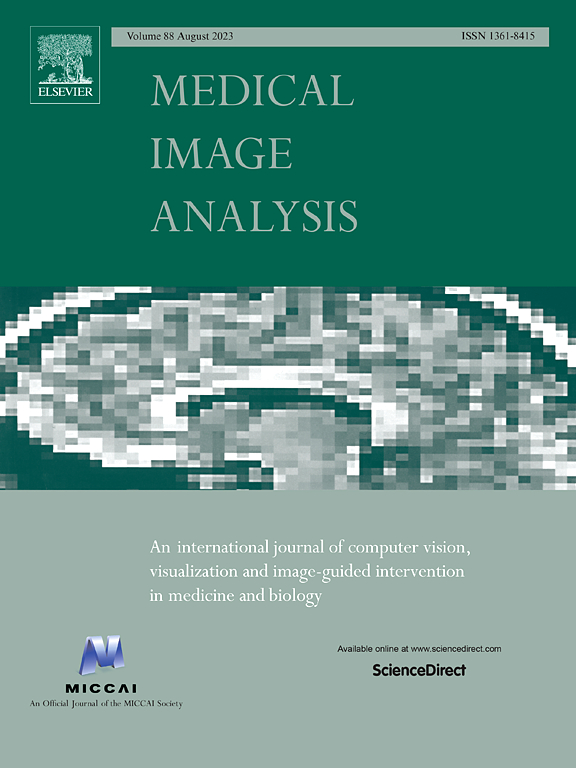Multiple token rearrangement Transformer network with explicit superpixel constraint for segmentation of echocardiography
IF 10.7
1区 医学
Q1 COMPUTER SCIENCE, ARTIFICIAL INTELLIGENCE
引用次数: 0
Abstract
Diagnostic cardiologists have considerable clinical demand for precise segmentation of echocardiography to diagnose cardiovascular disease. The paradox is that manual segmentation of echocardiography is a time-consuming and operator-dependent task. Computer-aided segmentation can reduce the workflow greatly. However, it is challenging to segment multi-type echocardiography, which is reflected in differential anatomic structures, artifacts, and blurred borderline. This study proposes the multiple token rearrangement Transformer network (MTRT-Net) embedded in three novel modules to address the corresponding three challenges. First, the depthwise deformable attention module can extract flexible features to adapt to anatomic structures of echocardiography with different ages and diseases. Second, the superpixel supervised module can cluster similar features and keep discriminative features away to make the segmentation regions tend to be an entire body. The artifacts have the influence in separating the complete internal region. Third, the atrous affinity aggregation module can integrate affinity features near the borderline to judge the blurred regions. Overall, the three modules rearrange the relationships of tokens and broaden the diversity of features. Besides, the explicit constraint brought by the superpixel supervised module enhances the performance of fitting ability. This study has 13747 echocardiography to train and test the MTRT-Net. Abundant experiments also validate the performance of MTRT-Net. Therefore, MTRT-Net can assist the diagnostician in segmenting the echocardiography precisely.
求助全文
约1分钟内获得全文
求助全文
来源期刊

Medical image analysis
工程技术-工程:生物医学
CiteScore
22.10
自引率
6.40%
发文量
309
审稿时长
6.6 months
期刊介绍:
Medical Image Analysis serves as a platform for sharing new research findings in the realm of medical and biological image analysis, with a focus on applications of computer vision, virtual reality, and robotics to biomedical imaging challenges. The journal prioritizes the publication of high-quality, original papers contributing to the fundamental science of processing, analyzing, and utilizing medical and biological images. It welcomes approaches utilizing biomedical image datasets across all spatial scales, from molecular/cellular imaging to tissue/organ imaging.
 求助内容:
求助内容: 应助结果提醒方式:
应助结果提醒方式:


